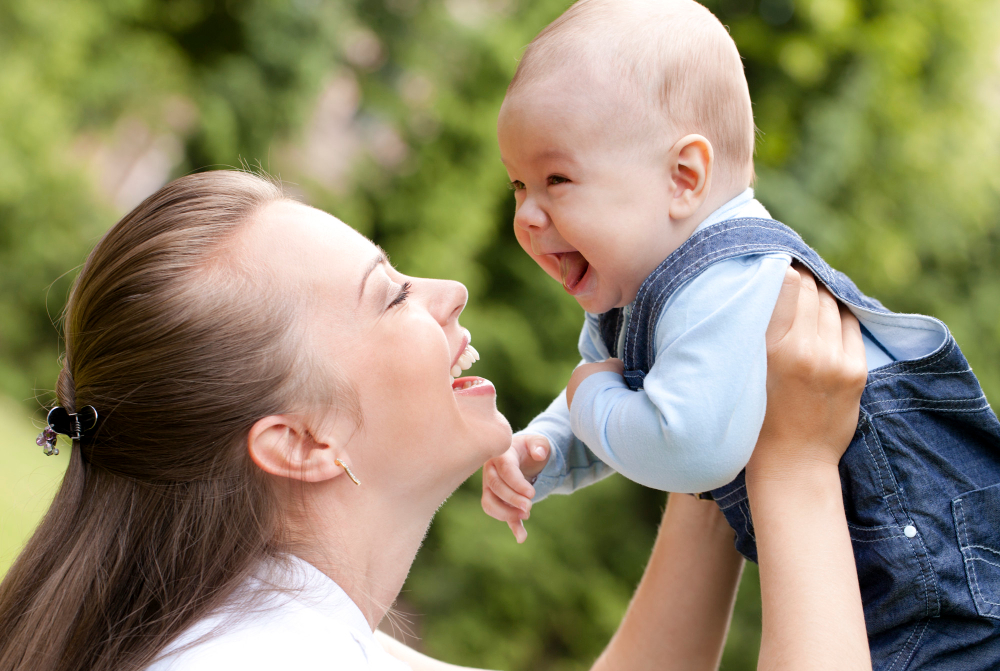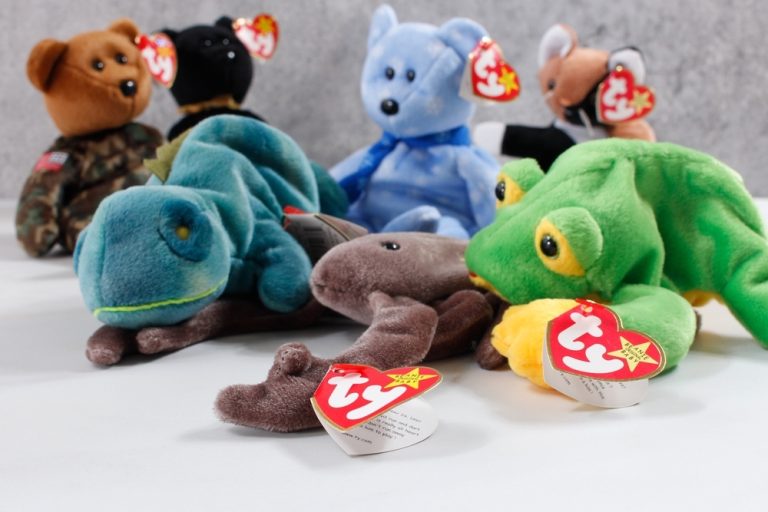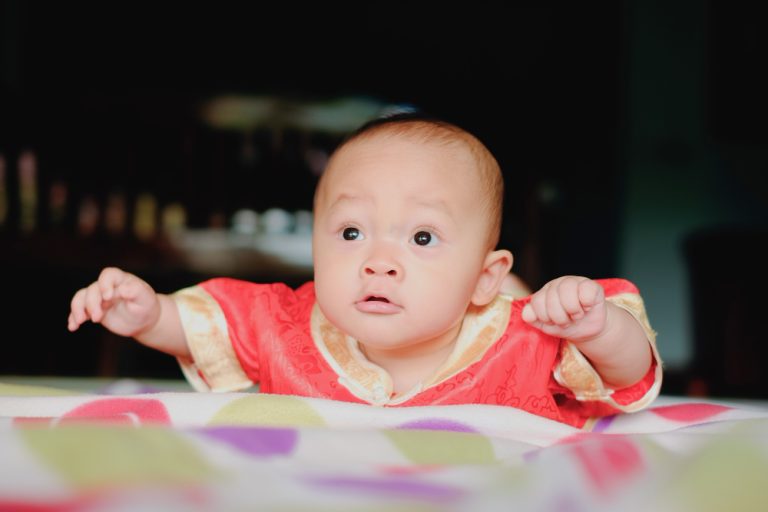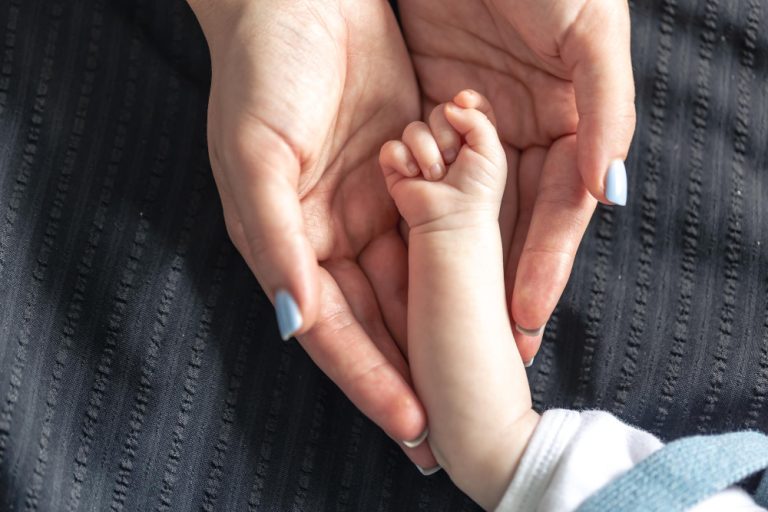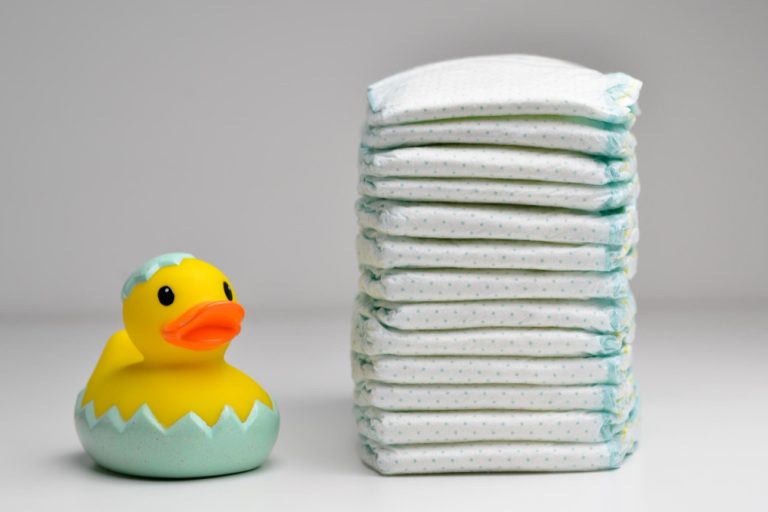How To Make A Baby Laugh? The Ultimate Baby Laughter Guide
Do you remember the last time you heard your baby’s contagious laughter? What if I told you there’s a way to ensure that joyful sound fills your home every day? As a parent, have you ever wondered about the secrets to how to make a baby laugh?
Understanding the nuances of making your baby laugh can create lifelong memories and deepen the bond between you and your little one.
In our blog, “How to Make a Baby Laugh,” we delve into the art of eliciting those precious giggles and explore laughter’s significant role in your baby’s development. From playful movements to silly sounds, we uncover the secrets behind what triggers your baby’s laughter and how you can enhance this joyful experience.
Get ready to venture on a journey of discovery as we reveal the proven techniques and scientific insights that will make your baby laugh and deepen your bond in ways you never imagined.
Let’s explore the wonders of laughter and create unforgettable moments with your little bundle of joy.
Introduction to Baby Laughter
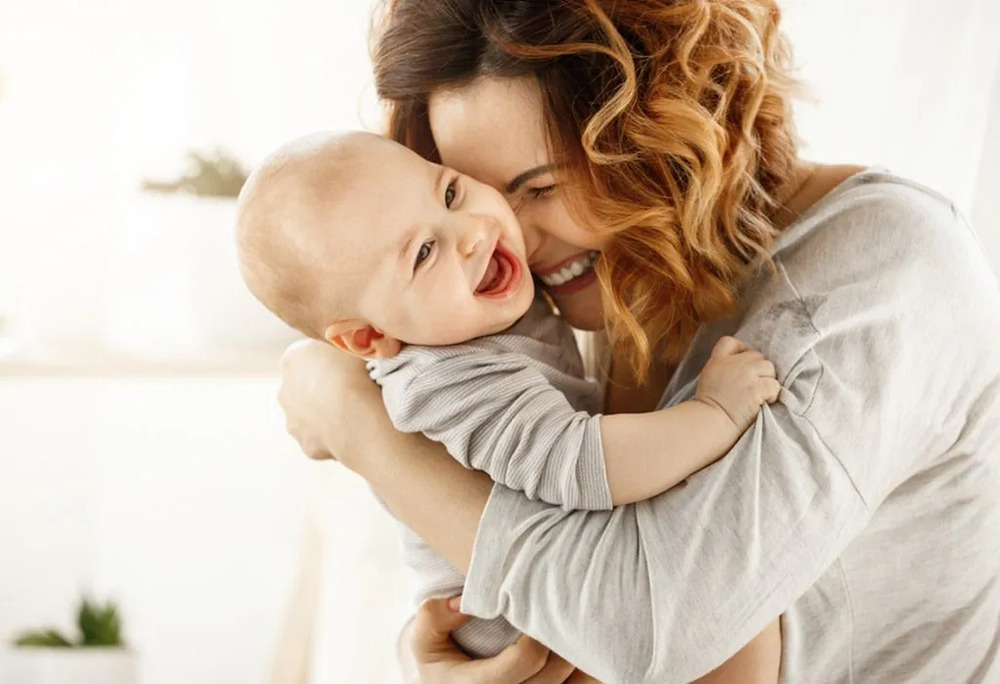
Baby laughter is a magical sound that brings both parents and babies joy. It lights up the room and has numerous benefits for a baby’s development and overall well-being. Understanding the significance of baby laughter can help parents cultivate a stronger bond and create a happy environment for their little ones.
When babies laugh, it is a sign of happiness and contentment. It reflects their growing cognitive, emotional, and social abilities. Laughing stimulates their brain, strengthens their muscles, and contributes to their overall physical and emotional development.
Additionally, laughter acts as a social bonding tool, helping babies connect with their caregivers and peers. It strengthens the parent-child relationship as babies associate laughter with positive interactions and feelings of love and security.
Scientific studies have shown that baby laughter releases endorphins, the feel-good hormones that enhance their mood and immune system. It also promotes relaxation and alleviates stress, both for the baby and the parents.
Understanding the significance of baby laughter can inspire us as parents to create a joyful and playful environment for our little ones. It encourages us to engage in activities that elicit laughter, such as playful movements, funny sounds, and social interactions. By adopting the power of baby laughter, we can nurture their well-being and contribute to their overall happiness.
Remember, each baby is unique, and their laughter cues may vary. Paying attention to their responses and adapting our approach can help us create moments of laughter and joy that will be cherished forever.
Let’s venture on this joyful journey of how to make a baby laugh and witness the magic and wonder it brings to our lives.
“Laughter is the sun that drives winter from the human face.” – Victor Hugo.
Playful Movements: How To Make A Baby Laugh
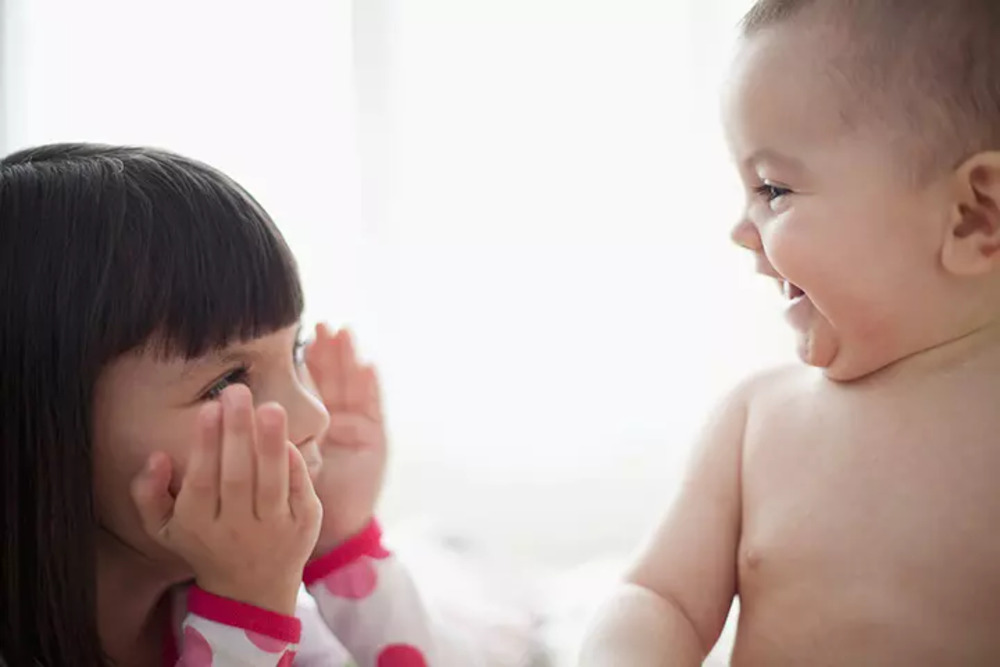
Playful movements are a wonderful way to engage with your baby and elicit laughter. These simple actions can bring so much joy to both you and your little one.
Here are some techniques you can try:
1. Tickling
Gently tickle your baby’s belly, feet, or under their chin. Watch their adorable giggles and squirm with delight.
2. Gentle Bouncing
Hold your baby securely and bounce them on your lap or gently lift them in the air. The sensation of movement often brings out their happy laughter.
3. Peek-a-Boo
Cover your face with your hands or a blanket, and then uncover it with a big smile and a cheerful “peek-a-boo!” Your baby will find this surprise game utterly delightful.
4. Baby Massage
Use gentle strokes and caresses to relax your baby. This helps them relax and sleep better and can bring giggles when you tickle their little toes or give them a gentle foot massage.
5. Dance Together
Hold your baby close and sway to some upbeat music. Dance around the room, twirl gently, and make silly moves. Your baby will find your dance moves hilarious.
Remember always to be tender and responsive to your baby’s cues. Each baby is unique, so pay attention to what makes them laugh and adapt your playful movements accordingly. Enjoy these special moments of laughter and bonding with your little one.
Babies thrive when they feel loved, understood, and engaged. Playful movements not only make them laugh but also stimulate their sensory experiences and contribute to their overall development.
Stay tuned for more techniques and insights on how to make a baby laugh in our upcoming sections.
Funny Sounds: How To Make A Baby Laugh
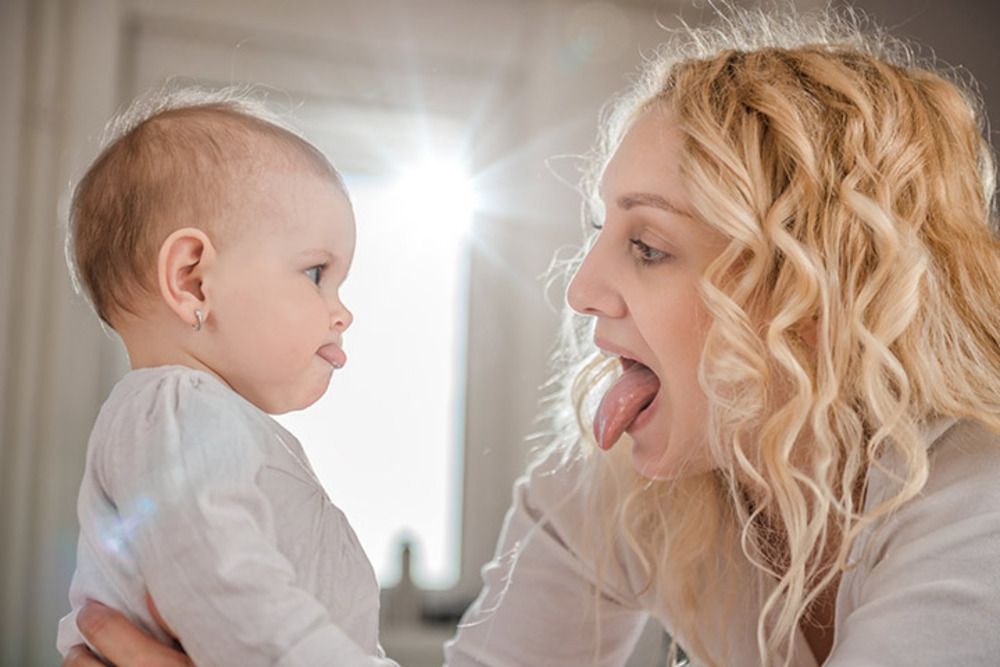
Babies have a remarkable ability to find joy in the simplest of things, and funny sounds are no exception. From silly voices to animal sounds, these amusing noises can easily elicit laughter and create moments of pure delight.
Whether you’re a new parent or a seasoned caregiver, incorporating funny sounds into your interactions with your baby can bring endless giggles and strengthen your bond.
Here are some examples of funny sounds that are sure to make your baby laugh:
1. Silly Voices
- Experiment with different voices, pitch variations, and exaggerated inflections.
- You can try a high-pitched voice, a deep voice, or imitate the voice of a beloved cartoon character.
- Get creative and watch your baby’s infectious laughter fill the room.
2. Animal Sounds
- Mimicking animal sounds can be a source of endless amusement for babies.
- Try making the sound of a barking dog, a meowing cat, or a quacking duck.
- You can even introduce your little one to the sounds of farm animals such as cows, pigs, and chickens.
3. Funny Noises
- Babies are intrigued by unexpected and amusing noises.
- You can use simple objects like rattles, squeaky toys, or even your mouth to create funny sounds.
- Explore the sound of a buzzing bee, a boing sound like a spring, or a squeaky door.
- Remember, the key is to keep the sounds light-hearted and playful.
Remember to observe your baby’s reactions and adjust your approach accordingly. Every baby has unique preferences and sensitivities. Some may giggle at the sound of a funny voice, while others may find animal sounds more amusing.
Pay attention to which sounds consistently make your baby laugh and incorporate them into your daily interactions.
Making funny sounds is not only about creating laughter; it’s also an opportunity for your baby to learn about different sounds, tones, and variations. It stimulates their auditory senses and contributes to their cognitive development. So, don’t be afraid to let your playful side shine through and venture on a laughter-filled journey with your little one.
As Albert Einstein once said, “The most important thing is to never stop questioning.” Keep experimenting with funny sounds and explore new ways to make your baby laugh.
Each burst of laughter is a precious moment that strengthens the bond between you and your baby, creating joyful memories that will last a lifetime.
Musical Interactions: How To Make A Baby Laugh
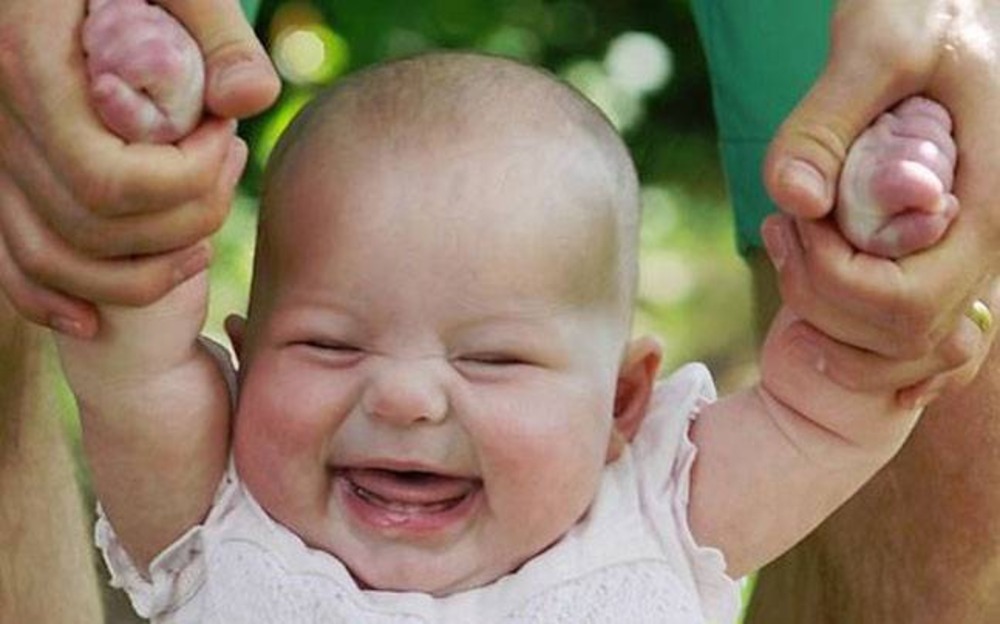
Music has a unique ability to captivate and engage babies, often resulting in infectious laughter. Incorporating musical interactions into your daily routine allows you to create delightful moments of joy and laughter with your baby.
Here are some ways to make use of music to make your baby laugh:
Sing Silly Songs
- Singing silly songs to your baby can be incredibly entertaining for both of you.
- Make up your own silly lyrics or modify familiar tunes, emphasizing exaggerated sounds and playful melodies.
- Your baby will be enthralled by the silly sounds and rhythmic patterns, leading to joyful giggles and laughter.
Play Musical Instruments
- Introducing your baby to musical instruments can be a great source of amusement.
- Let them explore different instruments, such as a toy xylophone or a mini drum, with their hands or through gentle tapping.
- The fascinating sounds produced by the instruments will stimulate their curiosity and elicit laughter.
Dance Together
- Dancing with your baby is not only a fun bonding activity but also a great way to make them laugh.
- Hold your baby securely and sway to the rhythm of the music, incorporating gentle spins or dips.
- The unexpected movements, combined with the joyful tunes, are sure to bring smiles and laughter to your little one.
Remember, the key to using music to make your baby laugh is to choose playful and engaging songs or rhythms. Pay attention to their reactions and adapt the music to their preferences. You can create lasting memories filled with laughter and joy by including musical interactions in your daily routine.
Physical Games: How To Make A Baby Laugh
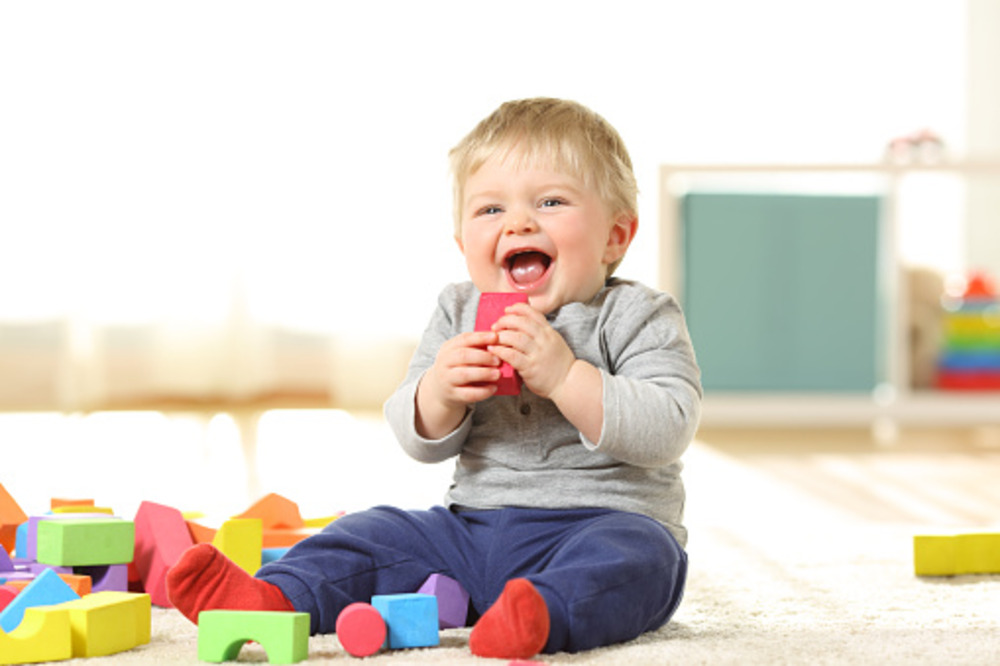
Physical games play a crucial role in stimulating laughter and promoting the overall development of babies. The joy and excitement they experience during these games contribute to their emotional, physical, and cognitive growth.
Engaging in gentle roughhousing, playing with toys, and even gentle tossing in the air can elicit bouts of contagious laughter in your little one.
Gentle Roughhousing
- Gentle roughhousing, also known as “rough and tumble play,” involves playful physical interaction with your baby.
- It includes activities like gently wrestling, tickling, and softly bouncing them on your knees.
- These activities bring out your baby’s laughter and help develop their motor skills, coordination, and body awareness.
Playing with Toys
- Toys are a wonderful way to engage your baby in physical games.
- Choose toys that encourage movement, such as soft balls or stuffed animals that can be tossed back and forth.
- You can also use toys that require physical actions, like stacking blocks or popping bubbles.
- These activities make your baby laugh and enhance their hand-eye coordination, fine motor skills, and problem-solving abilities.
Gentle Tossing
- Gently tossing your baby in the air (making sure never to go too high or too forcefully) can be a delightful experience for both of you.
- As you lift your baby up, supporting their head and neck, and bring them back down, their sense of movement and the feeling of weightlessness can trigger laughter.
- This activity promotes your baby’s spatial awareness, balance, and muscle strength.
Remember to always prioritize your baby’s safety and comfort during physical games. Pay attention to their cues and never engage in roughhousing or tossing if your baby seems uncomfortable or scared. Adjust your movements and intensity according to their preferences and responses.
Physical games promote laughter and strengthen the bond between you and your baby. These joyful interactions create positive associations with you as their caregiver, nurturing a sense of trust and security.
So, adopt playfulness, get involved in physical games, and cherish those precious moments filled with laughter and love.
Social Interactions: How To Make A Baby Laugh
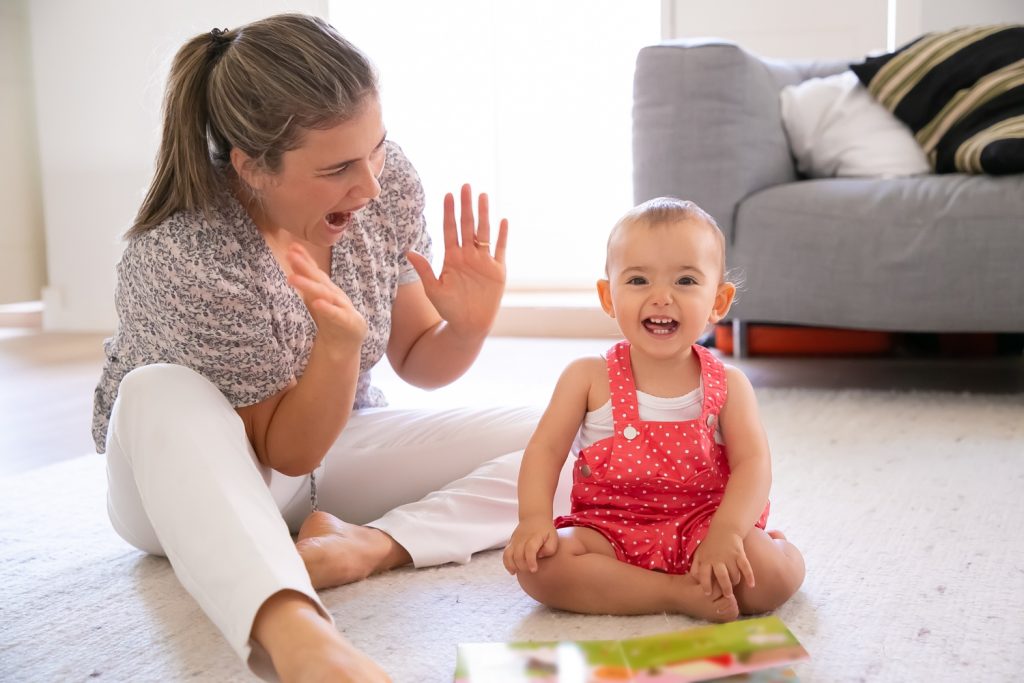
Social interactions play a vital role in making babies laugh and encouraging their development. Through these interactions, babies start to understand humor and experience the joy of laughter. Engaging in playful and silly moments with your baby can strengthen your bond and create lasting memories.
Here are some key ways to make your baby laugh through social interactions:
Making Funny Faces
- Making funny faces is a classic way to elicit laughter from babies.
- Their adorable smiles and giggles are often a result of seeing their parents contort their expressions into silly shapes.
- Take advantage of this by experimenting with different facial expressions and observing your baby’s response.
- You’ll soon discover what makes them crack up and bring a smile to their face.
Playing with Other Children
- Socializing with other children can be an excellent source of laughter for babies.
- Older kids are likely to join in the merriment when they see older kids laughing and having fun.
- Encourage playdates, attend parent-baby groups, or visit local playgrounds to provide opportunities for your baby to interact with their peers.
- Watching other children play and laugh can often trigger contagious laughter in babies.
Imitating Their Laughter
- Babies love to imitate the sounds they hear, including laughter.
- When you mimic their laughter, they will often find it hilarious and continue to giggle.
- This simple and playful interaction strengthens the parent-child bond and reinforces their sense of connection.
- Join in the laughter and create a joyful atmosphere for your baby.
Remember, social interactions provide babies with an early form of communication and social skills. They help develop their sense of humor and promote cognitive and emotional growth. Laughter in these interactions creates moments of joy and connection that contribute to their overall well-being.
So, go ahead and engage your baby in social interactions filled with laughter, funny faces, and playful conversations.
Understanding Baby’s Cues
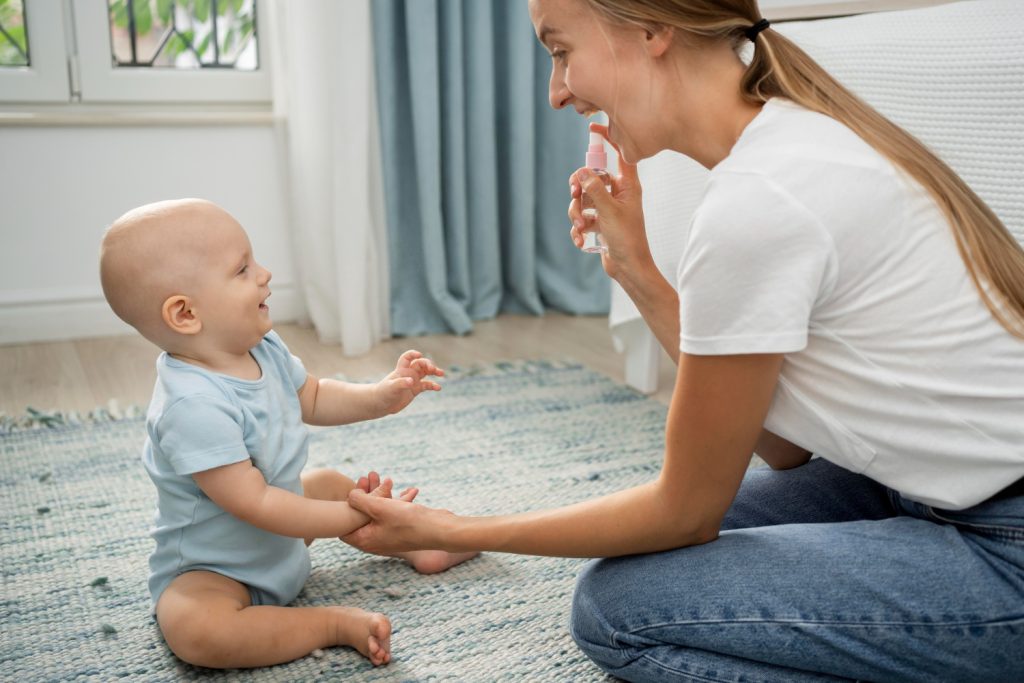
Reading your baby’s cues is essential to understanding what makes them laugh. By paying close attention to their reactions and adjusting your approach, you can create moments of laughter and joy.
Here are some tips for understanding your baby’s cues and making them laugh:
1. Facial Expressions
- Watch for a smile or an excited expression when you engage with your baby.
- These are clear signs that they are enjoying the interaction.
2. Body Movements
- Notice how your baby reacts to different stimuli.
- Do they wiggle, kick their legs, or move their arms in response to certain actions?
- These movements can indicate what makes them laugh.
3. Sound and Voice
- Experiment with different sounds and voices to see which ones make your baby giggle.
- Try making silly noises, using a high-pitched tone, or imitating their laughter.
4. Playful Surprise
- Babies love surprises!
- Gently surprising them with a peek-a-boo game or a sudden funny face can instantly bring a smile and laughter.
5. Gentle Touch
- Babies respond to touch, especially on sensitive areas like their feet or tummy.
- Lightly tickling or stroking these areas can often result in adorable laughter.
6. Imitating Baby’s Laughter
- Babies find it amusing when you imitate their laughter.
- Take cues from their laughter and respond with your own laughter to create a back-and-forth exchange.
Remember, every baby is unique, and their cues may vary. Understanding your baby’s individual preferences and adjusting your approach accordingly will help create moments of laughter and strengthen your bond.
Scientific Insights into Baby Laughter
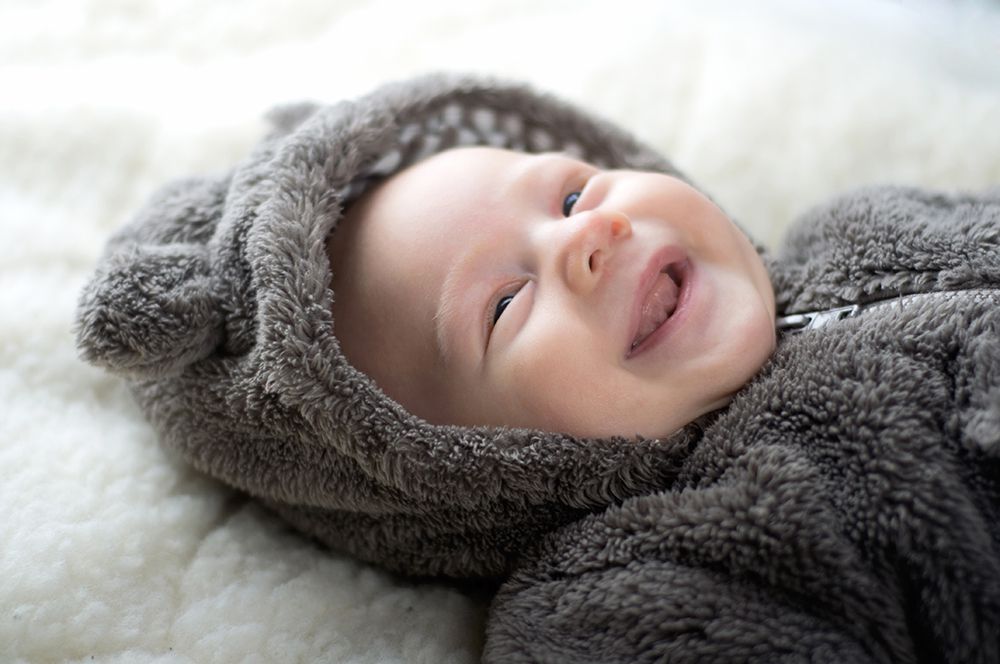
Laughter is a universal language that brings joy to both adults and babies. But have you ever wondered what causes those adorable giggles in your little one?
Let’s delve into the scientific insights behind baby laughter to understand this delightful phenomenon.
Mirror Neurons: The Power of Imitation
- Mirror neurons play a crucial role in baby laughter.
- These specialized cells in the brain are activated when we observe the actions of others, allowing us to imitate their behavior.
- When babies see someone laughing, their mirror neurons fire up, prompting them to mimic the laughter.
- This imitation brings a sense of social connection and helps babies learn about emotions and social cues.
Social Bonding and Brain Development
- Baby laughter is not just about amusement; it acts as a powerful catalyst for social bonding.
- A caregiver engaging in playful interactions with a baby and eliciting laughter strengthens their bond.
- This positive and joyful connection creates a sense of security, builds trust, and stimulates emotional development.
Moreover, baby laughter has a profound impact on brain development.
The repeated activation of neural circuits responsible for laughter contributes to the growth of essential brain structures. These structures are involved in emotional regulation, social cognition, and communication skills, setting the foundation for future development.
Milestones in Communication and Social Skills
Laughter is an early form of communication for babies. It allows them to interact with the world around them and express their joy and amusement.
- When babies laugh, they signal that they are enjoying the playfulness and social interaction happening in the moment.
- Additionally, baby laughter supports the development of social skills.
- It encourages babies to engage with others, promotes turn-taking during play, and enhances their understanding of nonverbal cues.
- Through laughter, babies learn the importance of social reciprocity and develop skills that will serve them throughout their lives.
Understanding the scientific insights behind baby laughter gives us a deeper appreciation for this joyful expression. Mirror neurons, social bonding, and brain development all contribute to its magic.
So, keep engaging your little one in playful interactions, and cherish those contagious giggles that strengthen your bond and promote their overall development.
Always remember that laughter is a moment of joy and a vital aspect of a baby’s growth and well-being.
3 Major Benefits of Baby Laughter

Baby laughter is not just a delightful sound; it also has numerous benefits for their cognitive, emotional, and social development.
Here are some of the ways baby laughter positively impacts their growth:
1. Cognitive Development
- Baby laughter plays a crucial role in stimulating cognitive skills and brain development.
- When babies laugh, their brains release endorphins, which enhance cognitive functioning and improve their ability to learn and retain information.
- Laughing also promotes curiosity, creativity, and problem-solving skills in babies as they explore their environment with enthusiasm and joy.
2. Emotional Well-being
- Laughter is a powerful tool for promoting emotional well-being in babies.
- When they laugh, their bodies release oxytocin, often referred to as the “love hormone.”
- This hormone helps establish a deep emotional bond between parent and child, cultivating a sense of security, trust, and comfort.
- Laughing also reduces stress levels and helps babies regulate their emotions, leading to increased happiness and contentment.
3. Social Development
- Baby laughter serves as a valuable social skill that helps babies connect with others and build relationships.
- When babies laugh, it signals their enjoyment and positive response to social interactions.
- It encourages parents, siblings, and caregivers to engage in playful and nurturing interactions, strengthening the parent-child bond and promoting social development.
- Additionally, laughing in the presence of others helps babies develop a sense of humor and understand social cues from an early age.
Baby laughter benefits go beyond sheer amusement. It supports cognitive development, promotes emotional well-being, and facilitates social growth. Parents can create a joyful and loving environment that contributes to their baby’s overall development by cherishing and nurturing infectious giggles.
Remember, laughter is not only enjoyable for your baby but also crucial for their growth and well-being.
The Final Note: How To Make A Baby Laugh
To summarize, the power of baby laughter cannot be understated. Not only does it bring immense joy to parents, but it also plays a crucial role in the development and bonding of parent-child relationships.
Through this journey of exploring how to make a baby laugh, we have learned various techniques and insights that can help create those precious moments of laughter.
Engaging in playful movements such as tickling, gentle bouncing, and peek-a-boo can elicit giggles from your little one. Funny sounds, like silly voices, animal noises, and funny noises, are also great triggers for baby laughter. Musical interactions, such as singing silly songs and dancing together, provide delightful experiences that can make your baby burst into laughter.
Physical games, like gentle roughhousing, playing with toys, and gentle tossing in the air, stimulate laughter while also promoting physical development. Social interactions, including making funny faces, playing with other children, and imitating their laughter, are vital for developing social bonding and communication skills.
By understanding your baby’s cues and adjusting your approach accordingly, you can better meet their unique laughter triggers.
From a scientific perspective, baby laughter is associated with mirror neurons, social bonding, and brain development. It serves as an early form of communication and nurtures important aspects of brain growth.
The benefits of baby laughter extend beyond the immediate joy it brings. It contributes to their cognitive, emotional, and social development, laying the foundation for a happy and healthy future.
In closing, cherish the delightful moments of your baby’s laughter, as they are an invaluable part of their growth and your special bond. Adopt the power of laughter and create lasting memories with your little one.

